Out of Home Advertising is on the Verge of a Renaissance (Mary Meeker report 2019)
Mary Meeker recently released her Internet Trends 2019 report. We wanted to know what implications it held for out of home (OOH) advertising. Here are 4 key takeaways worth noting.

If you live, breathe, sleep, and, of course, work in advertising or tech, you are likely to have heard about Mary Meeker, the "Queen of the Internet", and her infamous — and invaluable — annual internet trends report.
You can think of it as the proverbial “crystal ball” for the technology and advertising industries.
And for good reason:
Ms. Meeker has a knack for not only identifying both macro and micro trends that will have broad implications for the industry as a whole but also for laying out key insights in a straightforward and highly actionable way.
So, we went ahead and read and analyzed the 333 slides presented in this year's Internet Trends report so you didn't have to.
And what we found most interesting is that it confirms what we’ve known to be true for a while:
How OOH advertising space is well-positioned to compete with digital and capture a greater percentage of marketing budgets.
Overview
At AdQuick.com, our mission is to make it easy for advertisers to plan, purchase, and measure out of home campaigns – across the 10,000+ media owners across the globe – all on one software platform.
We've built our platform at a time when many digitally-native marketers are quickly tapping into the power of OOH more and more, oftentimes setting aside budgets for campaigns far earlier in the budgeting and planning process than their more traditional counterparts.
And we predict this trend will only continue to gain steam as:
- the attention to online advertisements decreases
- the measurability of OOH improves
- the price of digital advertising pricing grows
- the national reach of other traditional media (TV and radio) decreases
All of this has given digitally-native marketers a reason to rethink the value of OOH advertising as a means for reaching and engaging target audiences in a more relevant, impactful, and, now more than ever, interactive way.
True, there are tons of insights worth noting from this year’s report, but four key takeaways stood out to us that could be extrapolated to apply, albeit somewhat indirectly, to outdoor advertising.
Let’s take a quick look.
1. Macro internet advertising trends point to OOH growth
The day has finally come when online ad spend, for both desktop and mobile, have caught up to impressions.
What this means is that more ad dollars — thanks in part to a roughly 10x increase in spend on mobile since 2013 — are competing at a much higher cost for the same amount of impressions.
This is not only a really effective way to waste your valuable advertising budgets, but it’s also not sustainable in the long run.
Advertisers will have no choice but to find other non-cannibalizing ways to reach their target customers more effectively and at a lower cost.
This is also compounded by the fact that internet ad revenues are seeing their first hint at decline, suggesting that the growth of the internet advertising industry globally is slowing.
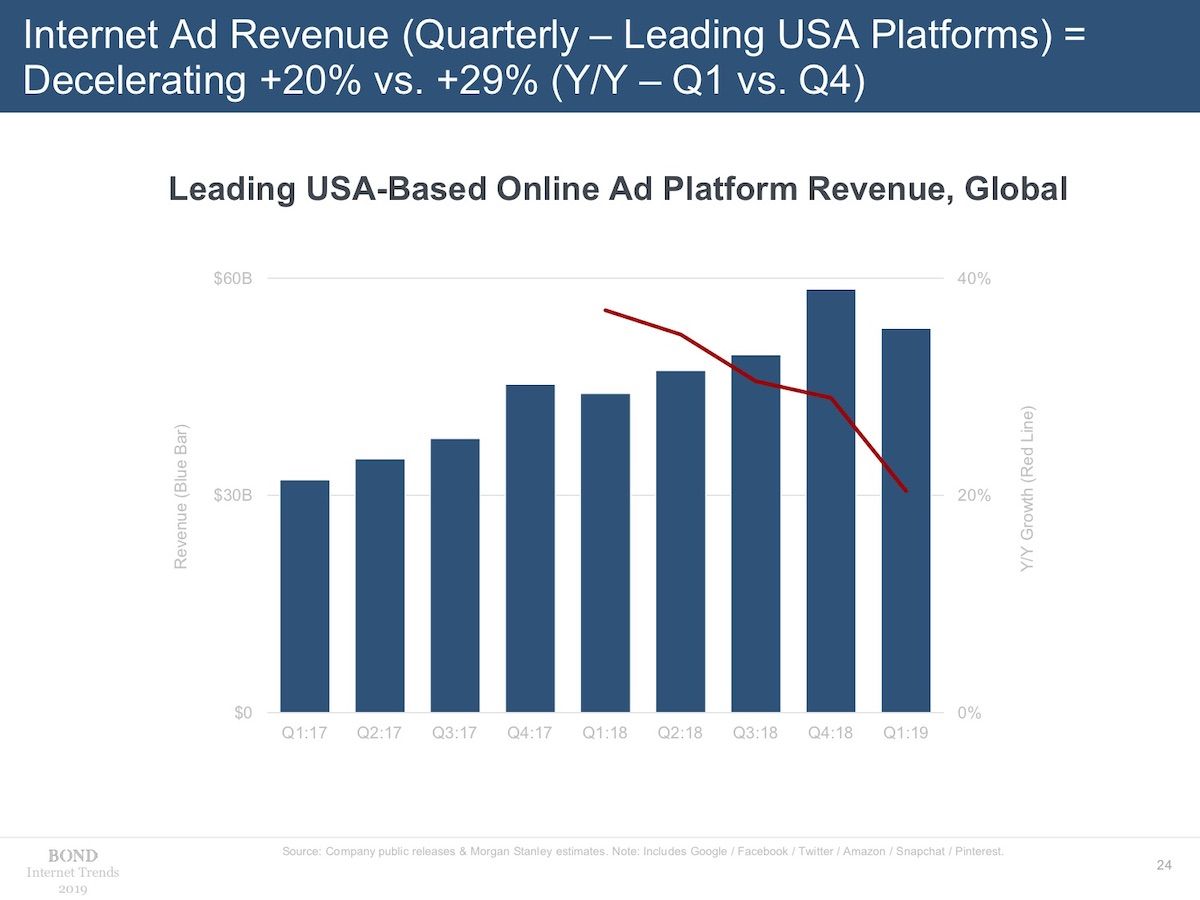
However, when you look at this data, there’s one thing here that’s missing entirely:
there’s no mention of out of home whatsoever.
Perhaps this is because, as an industry, we think of out of home as still a purely traditional medium — a solid explanation as to why it doesn’t see the light of day in an “internet trends” report.
Why we think omitting OOH from the broader ad spend picture is a huge miss
Because, first and foremost, we know that consumers spend 70% of their time outside of the home.
But, strangely enough, only three percent of U.S. ad spend is spent on outdoor advertising.
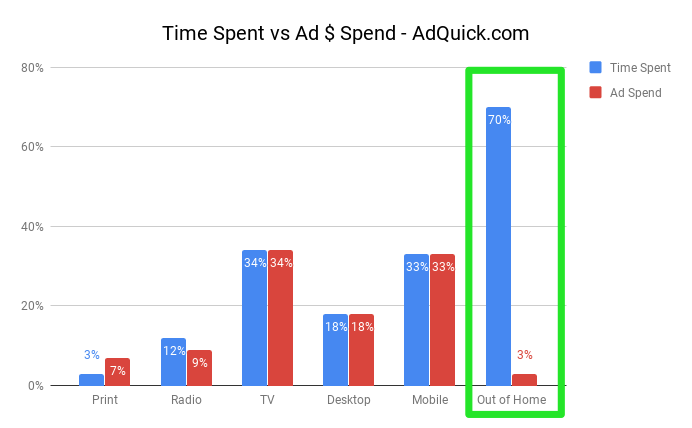
These numbers just don’t add up.
There may be a common assumption that for brands to be wherever their customers are, they must double down on mobile.
It’s definitely not a bad idea, seeing as how people are always on the go, always on their phones, and moving around a lot more these days, especially in larger metro areas.
Did you know that OOH drives better performance of your ads on digital channels?
Many of our customers that supplement their OOH campaigns with our mobile ad solution see an average improvement of 30-40% in their CTR (vs. simply running mobile ads alone) and as high as 155% (with exceptional creative) in a four week flight.
This signals a huge opportunity to align online and outdoor ad spend, which, if you’re following along closely, perfectly positions OOH for its long overdue, yet well-deserved renaissance (music to our ears!).
2. OOH is cost-effective
Today, a significant amount of internet advertising is bought programmatically.
And although it’s a relatively easy and effective way to buy ads, the quick shift towards programmatic has also created a massive amount of competition, which has spiked ad costs, too.
As a result, brands with the deepest pockets win the programmatic battle while smaller, new-to-market brands find it harder and harder to break through — or get squeezed out entirely.
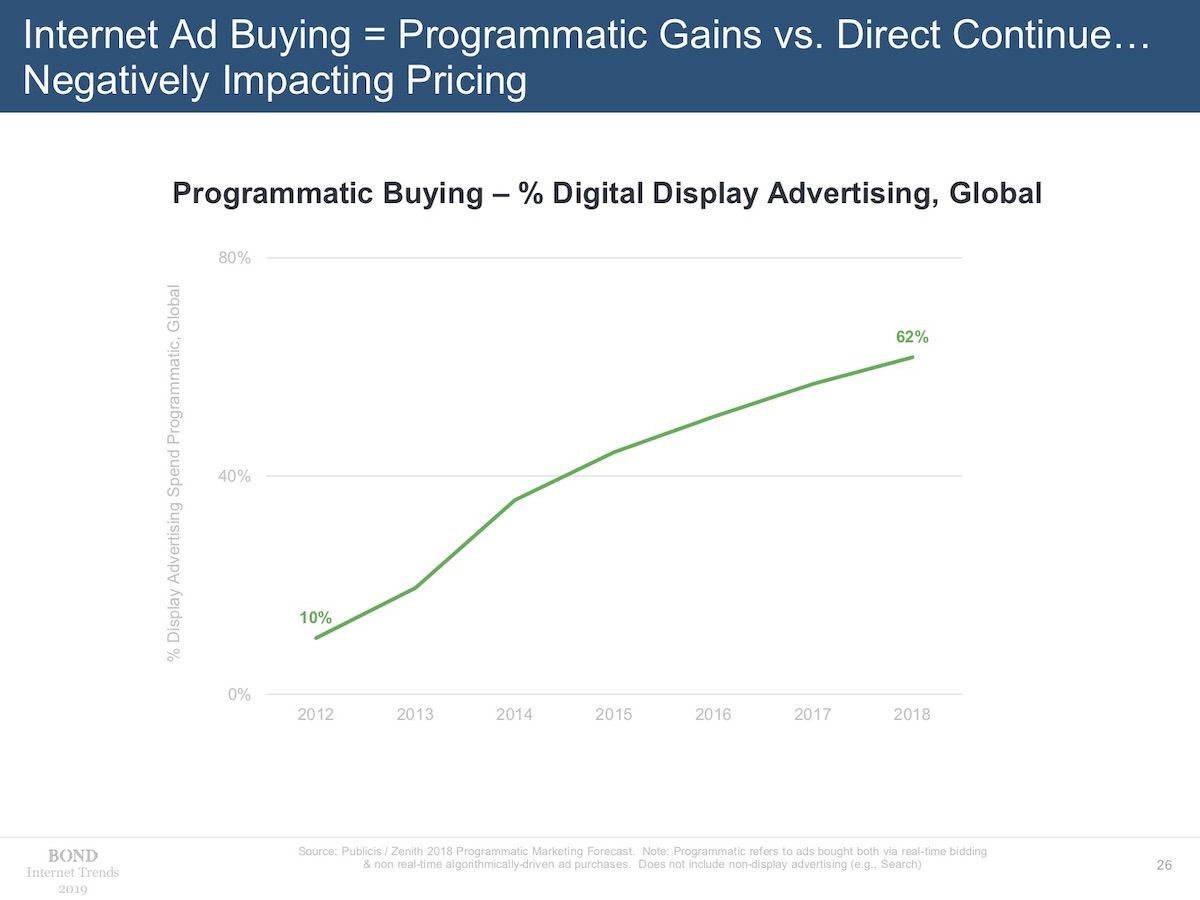
Underscoring all of this is the simple fact that the internet ad marketplace has become oversaturated to the point that brands, even those that have traditionally dedicated their ad spend to digital channels, are now being forced to look elsewhere to reach and engage their target customers effectively.
This signals a huge opportunity for out of home.
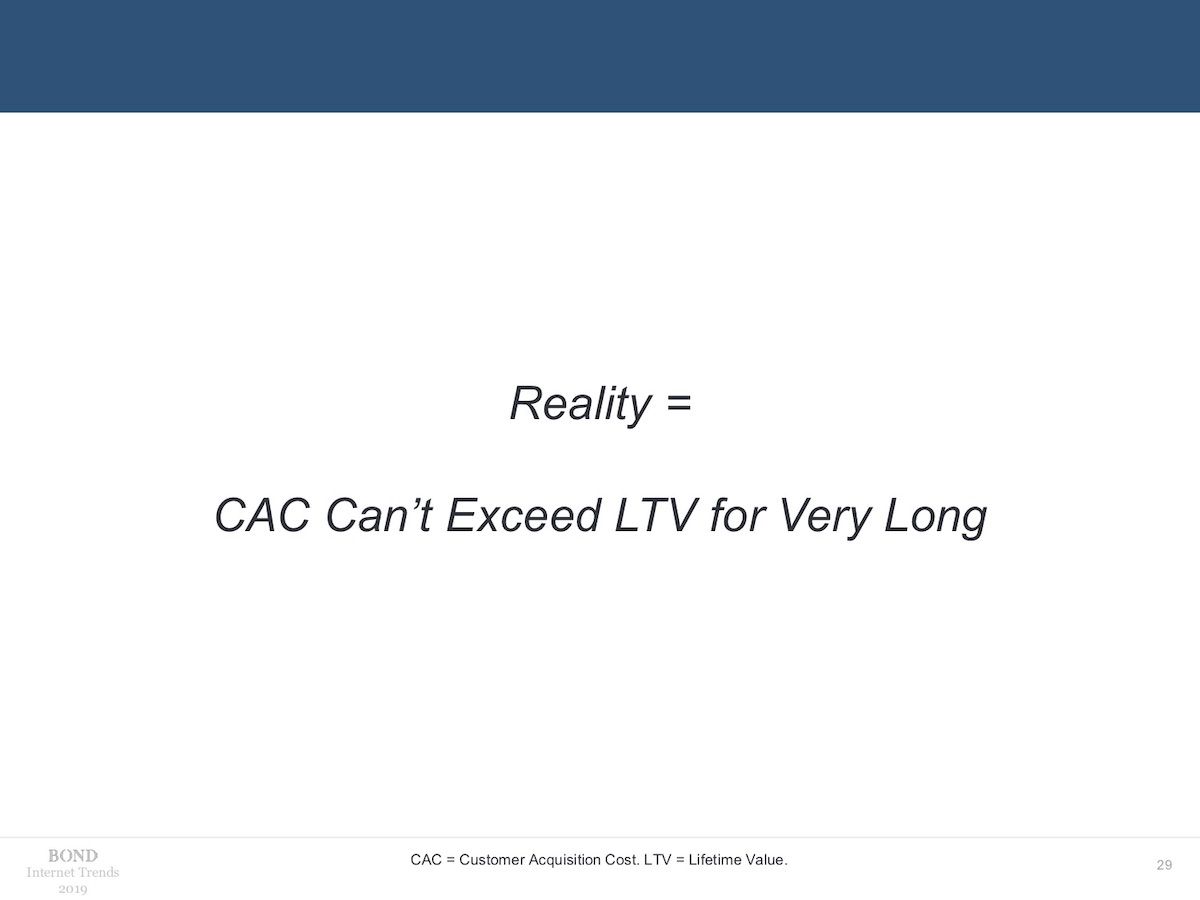
OOH media has one of the lowest average costs nationwide (around $4 CPM) and is a great way to maximize ad budgets — especially for emerging brands — and both augment and amplify existing digital ad buys (for all the reasons mentioned above).
Side note: If you'd like to get a better understanding of what what the median cost for a given media type is in a certain market – check out our billboard cost calculator.
3. Passive online usage is declining, fast
One of the biggest headlines in the advertising world recently was when time spent on mobile officially surpassed TV, which was, until now, considered the perennial “gold standard” for reaching audiences at scale with more brand-oriented messages.
But as TV’s numbers are quickly free-falling into a downward spiral, marketers are now being forced to look elsewhere to generate brand awareness with a massive national reach.
We can build a compelling case for outdoor advertising to fill this void.
Not only has it become easier to target, plan, and book OOH media, the medium itself has become more measurable and actionable (which we’ll get to in a second).
It’s also become a safer bet for advertisers to use a single platform like ours to make all of this possible in one place.
While these numbers may sound like a bright spot for mobile, there’s an undercurrent at play that could shift how people engage with all things digital.
More people, across every age group, are “almost constantly online” today than ever before.
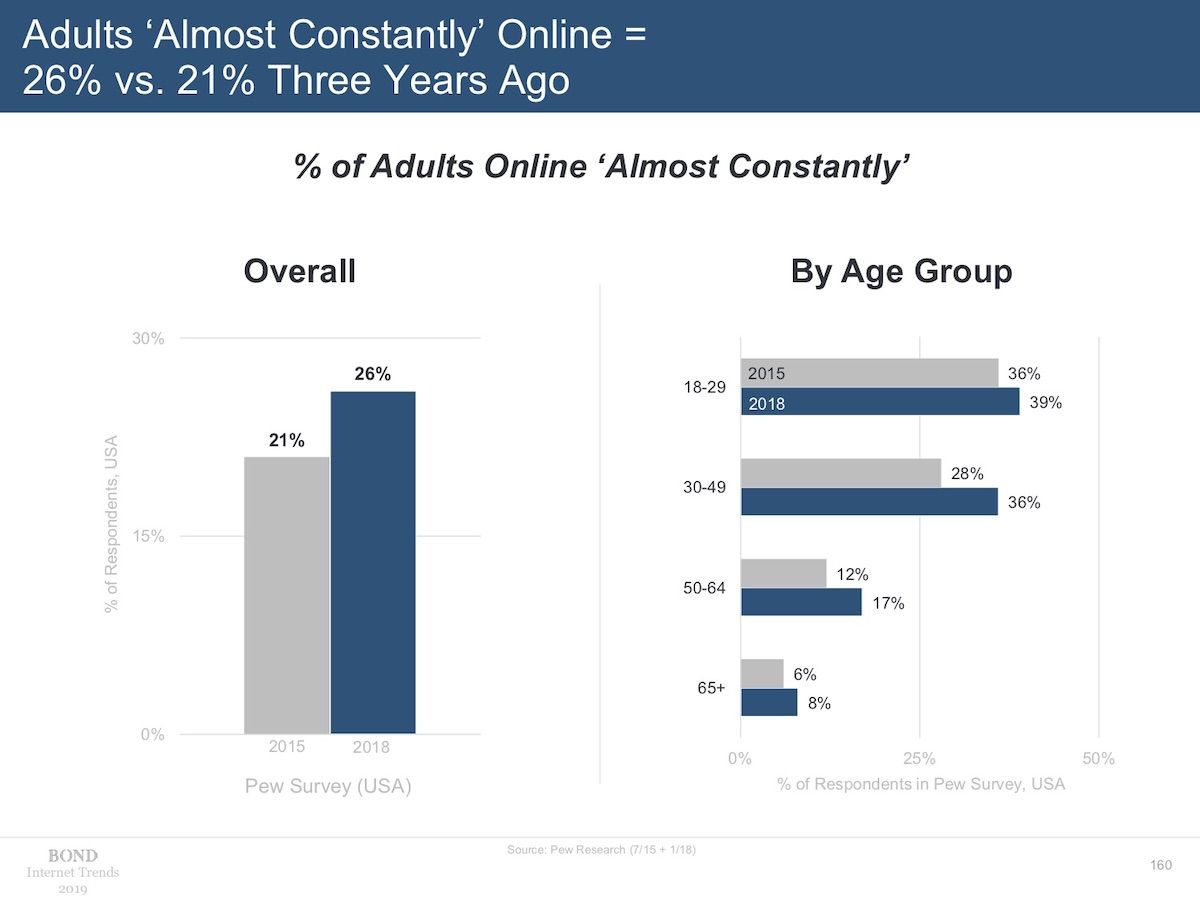
But with that has come a heightened awareness of digital usage.
So much that consumers are either taking steps on their own or using tools provided by mobile operating systems and applications to monitor and reduce overall online usage.
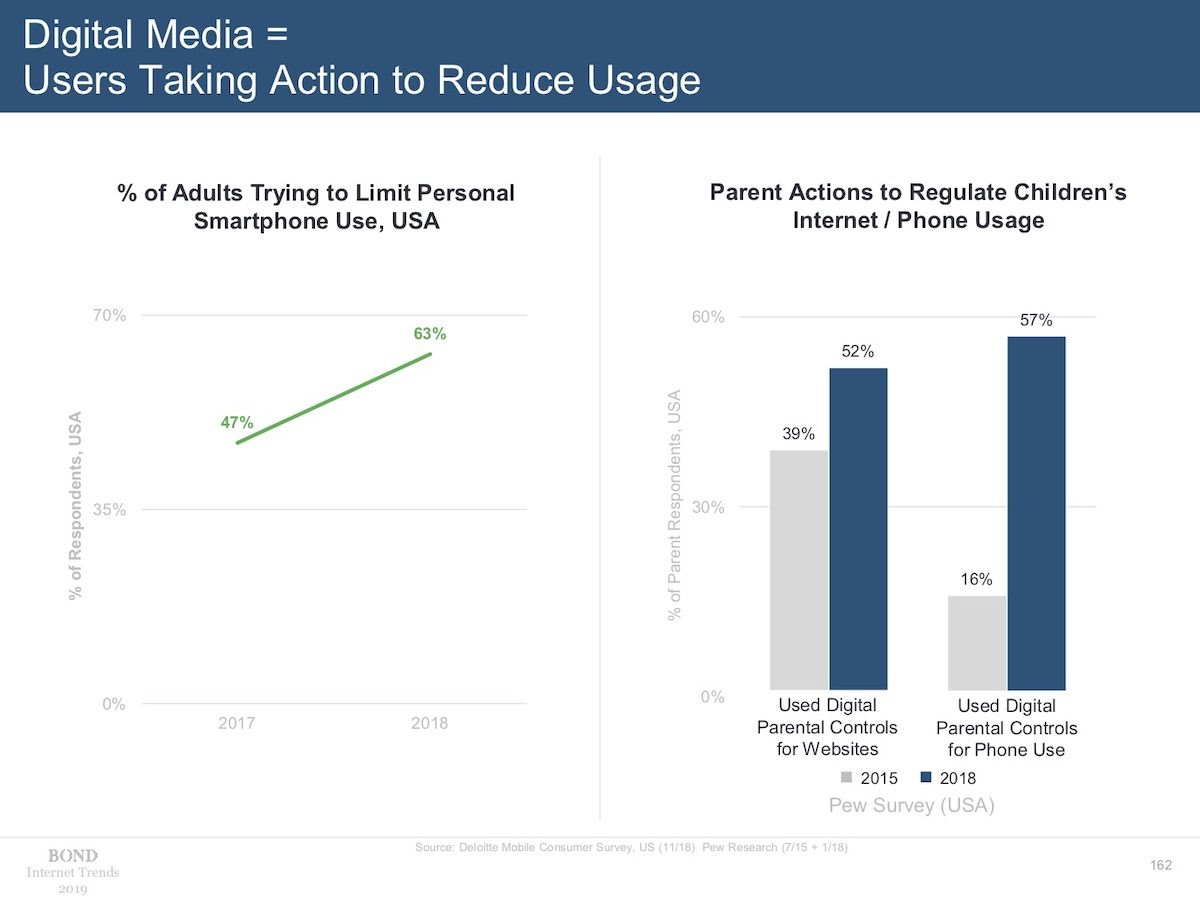
Passive consumption is quickly becoming a thing of the past while active, meaningful engagement is taking precedent.
Consumers today can’t handle the firehose of information anymore.
We’ve all become oversaturated and over-stimulated.
People today want to engage with content that’s relevant – even personalized – to them and be able to take action on it accordingly.
The big downside for mobile here, however, is that, as usage goes down, so does the supply of potential impressions, which, you guessed it, will drive ad costs up.
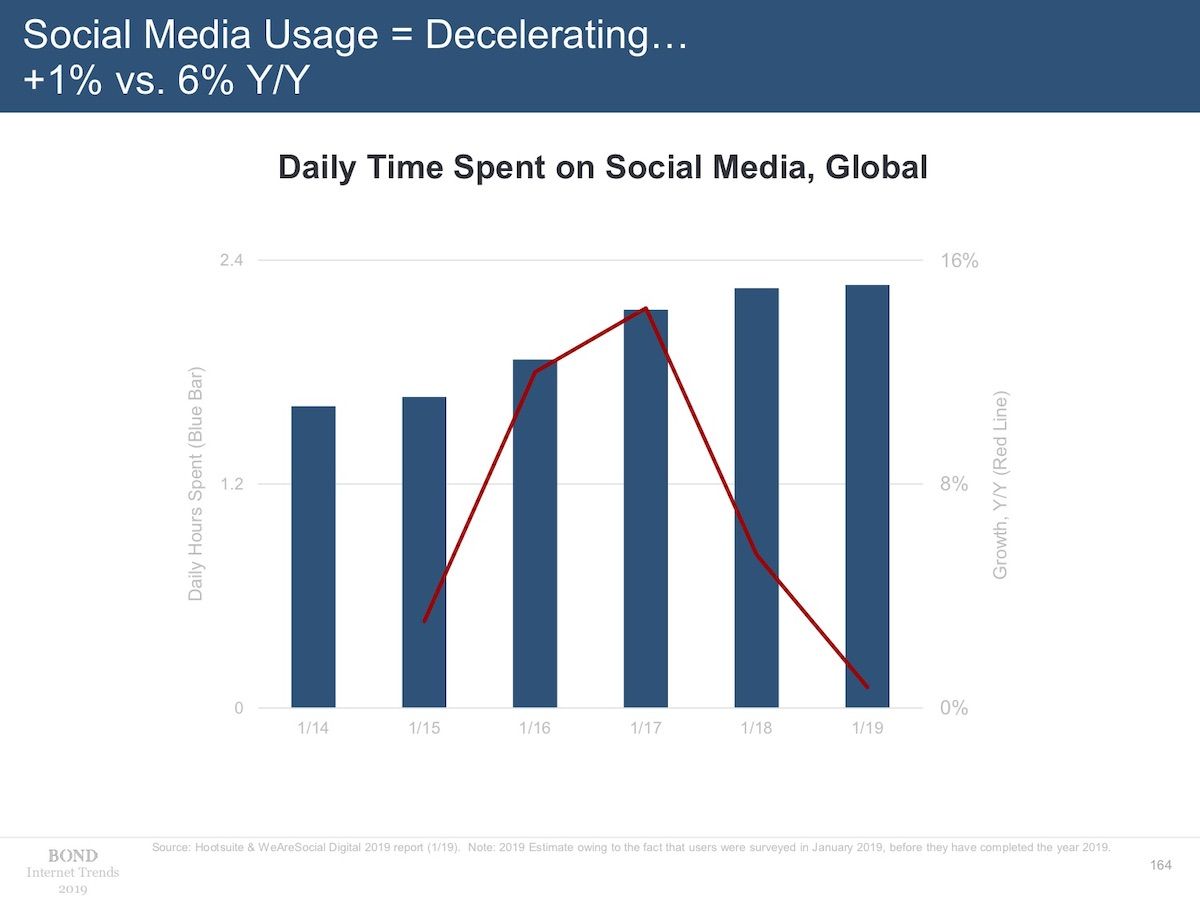
4. OOH media is more actionable & measurable than ever
This is where we can toot our own horn (if you've read this far, bear with us - we're almost at the finish line).
It’s no secret that the OOH space has undergone a data revolution over the last few years.
We’ve created a perpetually evolving platform that uses a variety of data and insights to measure the value and effectiveness of out of home advertising.
We believe that, as the world becomes more connected at every touch point and as we’re able to ingest more data about people’s actions and behaviors — at least in terms of how they interact with ads – out of home will become more quantifiable and more actionable over time – potentially even rivaling online attribution.
And as we mentioned above, we’ve got proof that aligning outdoor and internet ad buys can increase the effectiveness of internet ads significantly.
Simply put: we’ve come a long way from OOH’s rather static and analog past.
The truth is, we could talk for hours about the implications for OOH we discovered in the Meeker report – so we'll wrap it up here and share our biggest takeaway.
Conclusion
When looking more closely at engagement across various channels, a once “digital advertising only” mindset for performance marketers is rapidly shifting alongside market dynamics.
This is creating a perfect storm for out of home advertising to fill in the gaps — or even replace entirely — where digital advertising is falling short.
This is yet another reason why we believe so deeply in the benefit and value that OOH advertising can bring to advertisers in both the near- and long-term.
--
Interested in improving the performance of your existing digital marketing channels or building larger and better OOH campaigns faster?
Give us a shout to learn how we can help level up your marketing efforts.

